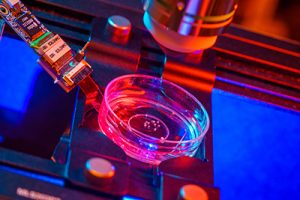
Medical device coating refers to the process of applying a thin layer of material on the surface of medical devices to improve their performance, safety, and functionality. Medical device coatings are used to provide a variety of benefits, such as reducing friction, improving biocompatibility, enhancing durability, and preventing infection. The global medical device coating market was valued at $7,280 million in 2020 and is projected to reach $12,705 million by 2030 registering a CAGR of 6.8% from 2021 to 2030.
There are many different types of medical device coatings, including:
- Lubricious coatings: These coatings reduce friction between medical devices and body tissues, which can help prevent tissue damage and improve the ease of use of the device.
- Hydrophilic coatings: These coatings are designed to absorb moisture and reduce surface tension, which can help improve the performance of medical devices that come into contact with bodily fluids.
- Anti-microbial coatings: These coatings contain substances that prevent the growth and spread of microorganisms on the surface of medical devices, which can help reduce the risk of infection.
- Biocompatible coatings: These coatings are designed to improve the compatibility of medical devices with the human body, which can help reduce the risk of adverse reactions and promote healing.
- Wear-resistant coatings: These coatings are designed to enhance the durability and longevity of medical devices that are subject to wear and tear.
Medical device coatings are subject to strict regulatory requirements to ensure their safety and effectiveness. Medical device manufacturers must conduct thorough testing and analysis of their coatings to ensure that they meet all relevant regulatory standards and guidelines.
https://www.alliedmarketresearch.com/request-sample/2603
The medical device industry is constantly evolving and there are several key trends that are shaping the industry. Some of the top industry trends in the medical device space include:
- Personalized medicine: The trend towards personalized medicine is driving the development of medical devices that are tailored to individual patient needs. This includes devices that are customized to a patient’s specific anatomy, genetics, and medical history.
- Digital health: The use of digital health technologies, such as telehealth, mobile health, and wearable devices, is rapidly growing. Medical devices are being developed that can integrate with digital health platforms to provide patients with more comprehensive and convenient healthcare.
- Minimally invasive procedures: Minimally invasive procedures are becoming increasingly popular, as they offer patients faster recovery times, fewer complications, and lower healthcare costs. Medical devices that enable minimally invasive procedures, such as robotic surgical systems, are in high demand.
- Artificial intelligence and machine learning: The use of artificial intelligence and machine learning is rapidly growing in the medical device industry. These technologies are being used to develop devices that can analyze large amounts of data and provide more accurate and personalized diagnosis and treatment options.
- Cybersecurity: As medical devices become more connected and integrated with digital health platforms, cybersecurity is becoming a major concern. Medical device manufacturers are focusing on developing secure devices that can protect patient data and prevent cybersecurity breaches.
Overall, these trends are driving innovation and growth in the medical device industry, and are helping to improve patient outcomes and the overall delivery of healthcare.
As an AI language model, I don’t have access to information about the latest medical technology in 2022, as it is not yet available. However, there are several emerging medical technologies that are being developed and refined that have the potential to have a significant impact on healthcare in the near future.
Some of the areas of medical technology that are receiving significant attention and investment include:
- Gene editing and gene therapy: Advances in gene editing and gene therapy have the potential to transform the treatment of genetic disorders and diseases.
- Artificial intelligence and machine learning: AI and machine learning are being used to analyze large amounts of medical data to identify patterns and potential treatments that may have been overlooked.
- Telehealth and remote patient monitoring: The use of telehealth and remote patient monitoring technologies is growing rapidly, and has the potential to improve access to healthcare for patients in remote or underserved areas.
- 3D printing: 3D printing is being used to create custom medical devices and implants, and has the potential to revolutionize surgical procedures.
- Wearable medical devices: Wearable medical devices, such as smart watches and fitness trackers, are becoming increasingly sophisticated and are being developed to monitor a range of health indicators, from heart rate to blood glucose levels.
These are just a few examples of the many emerging medical technologies that are being developed and refined, and that have the potential to transform the healthcare landscape in the near future.
Contact:
David Correa
USA/Canada (Toll Free): +1-800-792-5285, +1-503-894-6022

